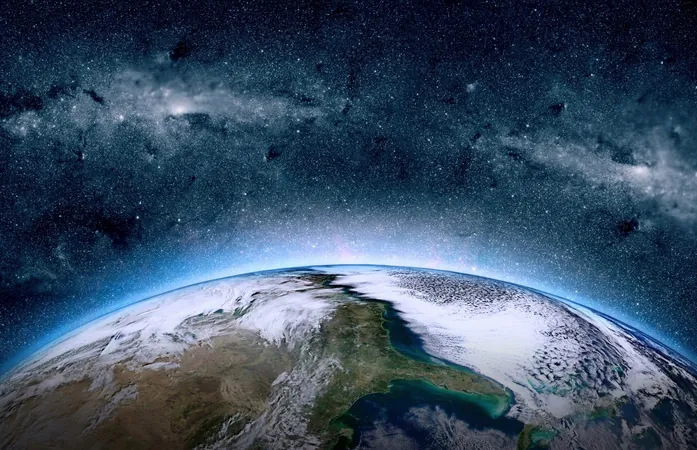
NASA's LEXI to Unveil Earth's Magnetosphere from the Moon
2025-01-06
Author: John Tan
In a groundbreaking mission that merges curiosity and technology, NASA's LEXI (Lunar Environment Heliospheric X-ray Imager) is set to explore the enigmatic realm of Earth's magnetosphere directly from the moon. This mission is a key part of NASA’s ambitious Artemis program, which aims to establish a sustainable human presence on the lunar surface and advance space exploration.
As we continue to seek answers beyond our home planet, understanding the invisible forces protecting Earth has become a priority for scientists. At the forefront is our planet’s magnetic field, a crucial barrier that safeguards life from harmful solar radiation.
LEXI Takes Flight
The LEXI instrument will embark on its journey from NASA’s Kennedy Space Center in Florida aboard Firefly Aerospace's Blue Ghost lunar lander. Upon its successful landing on the moon, LEXI will begin its mission by gathering critical data about the magnetic field surrounding Earth.
For the first time, LEXI will provide detailed global images of Earth's magnetosphere, showcasing how it interacts with solar winds — streams of charged particles emitted by the sun — and revealing the vulnerabilities of our planet’s protective shield.
During a six-day observation period, LEXI will focus on capturing low-energy X-rays generated when solar winds collide with the magnetosphere. This data will allow researchers to visualize how the magnetosphere expands and contracts like a 'breathing' entity, responding dynamically to the intensity of solar winds.
A 10-Year Journey to the Moon
The roots of LEXI stretch back nearly a decade, when a team at NASA's Goddard Space Flight Center began developing and testing technology to detect low-energy X-rays. Originally known as STORM, this imager made its first foray into space back in 2012 by launching on a sounding rocket, collecting essential data before returning to Earth.
After a call for innovative projects under the Commercial Lunar Payload Services (CLPS) initiative, the groundwork was laid to adapt and enhance STORM into LEXI. This transformation involved significant refurbishments, enabling the instrument to resume its cosmic exploration from the moon’s surface.
Implications for Science and Exploration
The implications of LEXI's mission extend far beyond mere observation. Scientists hope that the findings will help deepen our understanding of how solar winds and magnetic forces interplay to impact our planet, influencing everything from auroras to potential hazards that can disrupt technological infrastructure on Earth.
Brian Walsh, principal investigator of LEXI and a space physicist at Boston University, emphasized, 'We expect to gain insights that are both scientifically valuable and visually spectacular.' By providing a more cohesive picture of Earth's space environment, LEXI could pave the way for future explorations and enhance our comprehension of the universe.
Continuing the Journey
As NASA's Artemis campaign propels humanity back to the moon and beyond, missions like LEXI play a vital role in expanding our knowledge of the solar system. With commercial partnerships blooming under the CLPS initiative, NASA not only fosters industrial growth but also sets the stage for long-term exploration goals.
In a world captivated by the mysteries of the cosmos, LEXI promises to unveil extraordinary details about the forces that shield our planet, bringing us one step closer to unraveling the secrets of the universe. So keep your eyes on the moon; exciting revelations are on the horizon!

 Brasil (PT)
Brasil (PT)
 Canada (EN)
Canada (EN)
 Chile (ES)
Chile (ES)
 Česko (CS)
Česko (CS)
 대한민국 (KO)
대한민국 (KO)
 España (ES)
España (ES)
 France (FR)
France (FR)
 Hong Kong (EN)
Hong Kong (EN)
 Italia (IT)
Italia (IT)
 日本 (JA)
日本 (JA)
 Magyarország (HU)
Magyarország (HU)
 Norge (NO)
Norge (NO)
 Polska (PL)
Polska (PL)
 Schweiz (DE)
Schweiz (DE)
 Singapore (EN)
Singapore (EN)
 Sverige (SV)
Sverige (SV)
 Suomi (FI)
Suomi (FI)
 Türkiye (TR)
Türkiye (TR)
 الإمارات العربية المتحدة (AR)
الإمارات العربية المتحدة (AR)